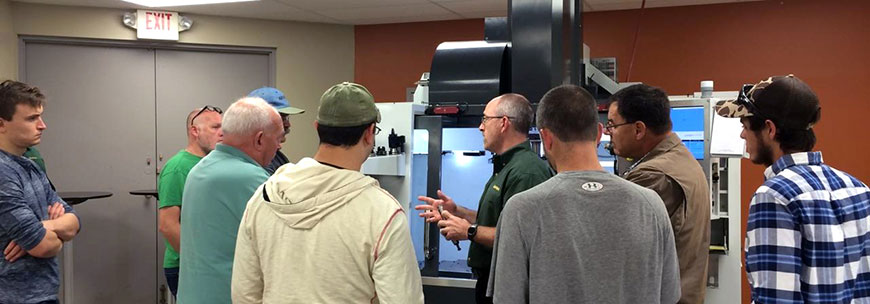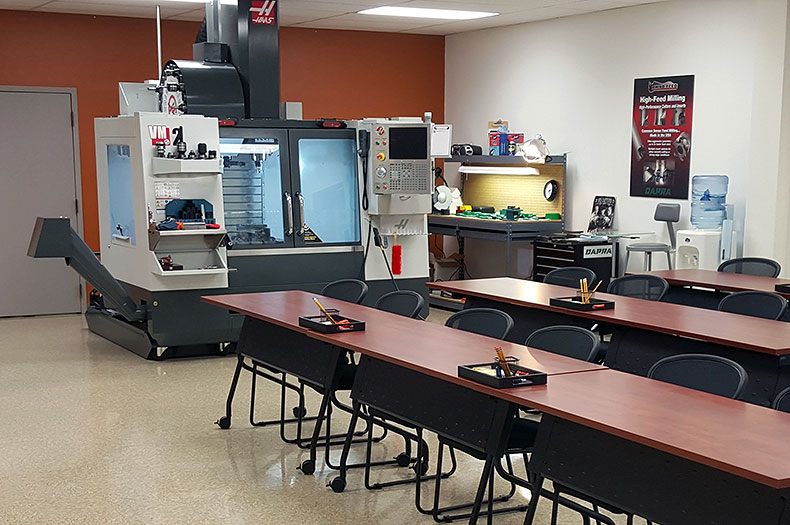Shop by Category
Technical Milling Training Classes
Hands-on training for engineers, programmers, setup personnel and operators.

We believe that education of the process – not just on our product – is critical to our customers’ success. This is why we incorporate many practical examples in our training. We want class attendees to get a firsthand look and understanding of the process, in a safe environment where no parts are scrapped, and where help is readily available.
Attendees have repeatedly told us how much they appreciate this training, and how much more they learned by doing it with us versus simply watching a prearranged demo put on by the host company.
Technical milling training classes at our Rockford, IL Training and R&D Center are focused exclusively on practical, usable machining principles – not on product marketing.
Classes at the Training and R&D Center provide a combination of both theoretical and practical training, with a 30-horsepower Haas VM-2 mold making machine tool on the classroom floor for hands-on demonstrations. This mold/die machine is well-suited for complex 3-dimensional surfacing, as well as typical 2D profiling and face milling. All training classes cover many practical examples to give attendees a thorough understanding of the process, providing immediate visual confirmation of the parameters and tooling chosen for the cut.

Attendees often tell us that the repetition involved in choosing the right tool and operating parameters, then doing the calculations for correct speeds and feeds, really helps to cement the concepts covered. Related processes and technologies such as workholding and spindle-mounted dot peen part marking can also be demonstrated.
What are our milling training goals?
- Improve general milling applications knowledge base
- Milling principles
- Formulas
- Tool selection and optimization, application-based
- Troubleshooting
- Improve working knowledge of Dapra products, including: cutter applications; carbide geometries and grades selection; workholding applications and capabilities
What milling products are covered?
- End mills
- Face Mills
- 90-degree square shoulder tools (APKT style)
- High feed tools
- Button cutters (round insert cutters)
- Ball nose & backdraft finishing tools (mold/die)
- Plunge mills
- Workholding and accessory devices
Some specific topics we'll cover:
- Climb vs. conventional milling
- Long reach milling considerations
- How to use the speed & feed charts in cutting tool catalogs
- Toolholders (pros / cons of various styles)
- Air vs. coolant (when to use each)
- Grade selection
- Geometry selection
- Application of cutting tools according to machine capabilities
- Soft vs. hard milling techniques
- Chip thinning (axial and radial)
- Chip formation based on cutting geometry
- Tool pressure based on cutting geometry
- Course pitch vs. fine pitch tooling
- Tool path suggestions
- Troubleshooting / wear and failure characteristics
- Carbide content
- How to select the right depth of cut
- Correct insert indexing procedure
- 3-axis helical interpolation
- 3-axis helical profiling (contour ramping)
- Machining strategies for various typical part shapes
Upcoming Training Sessions:
Info to Come. Contact us for custom sessions.
Request Training Information
Interested in private training for your team? Want to find out about future classes that are open to the public? Please fill out this form for more information.

